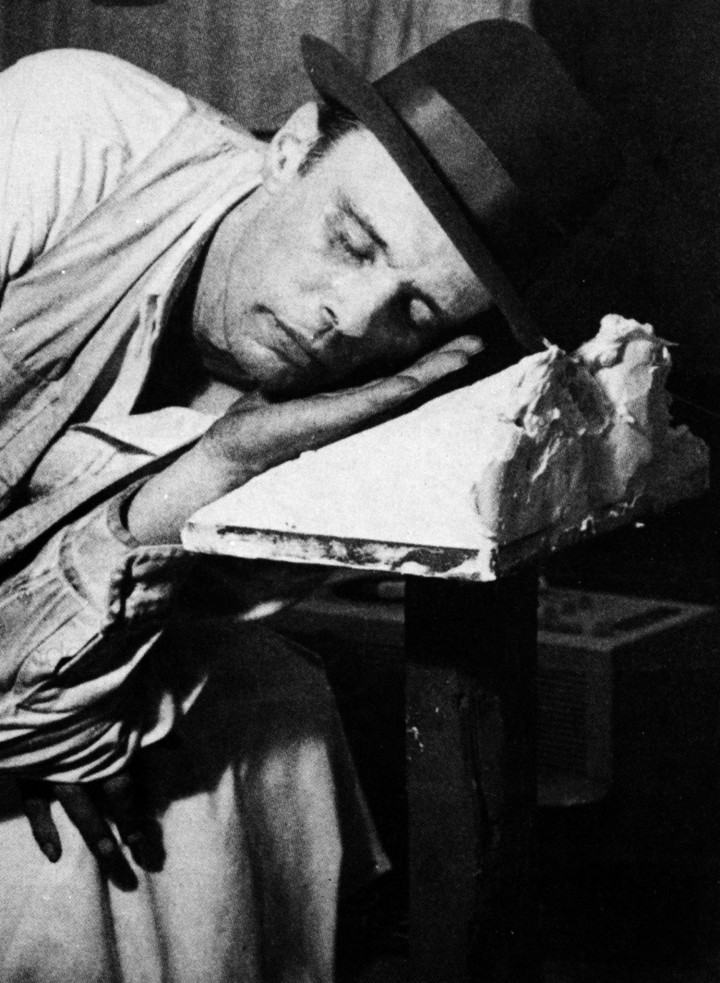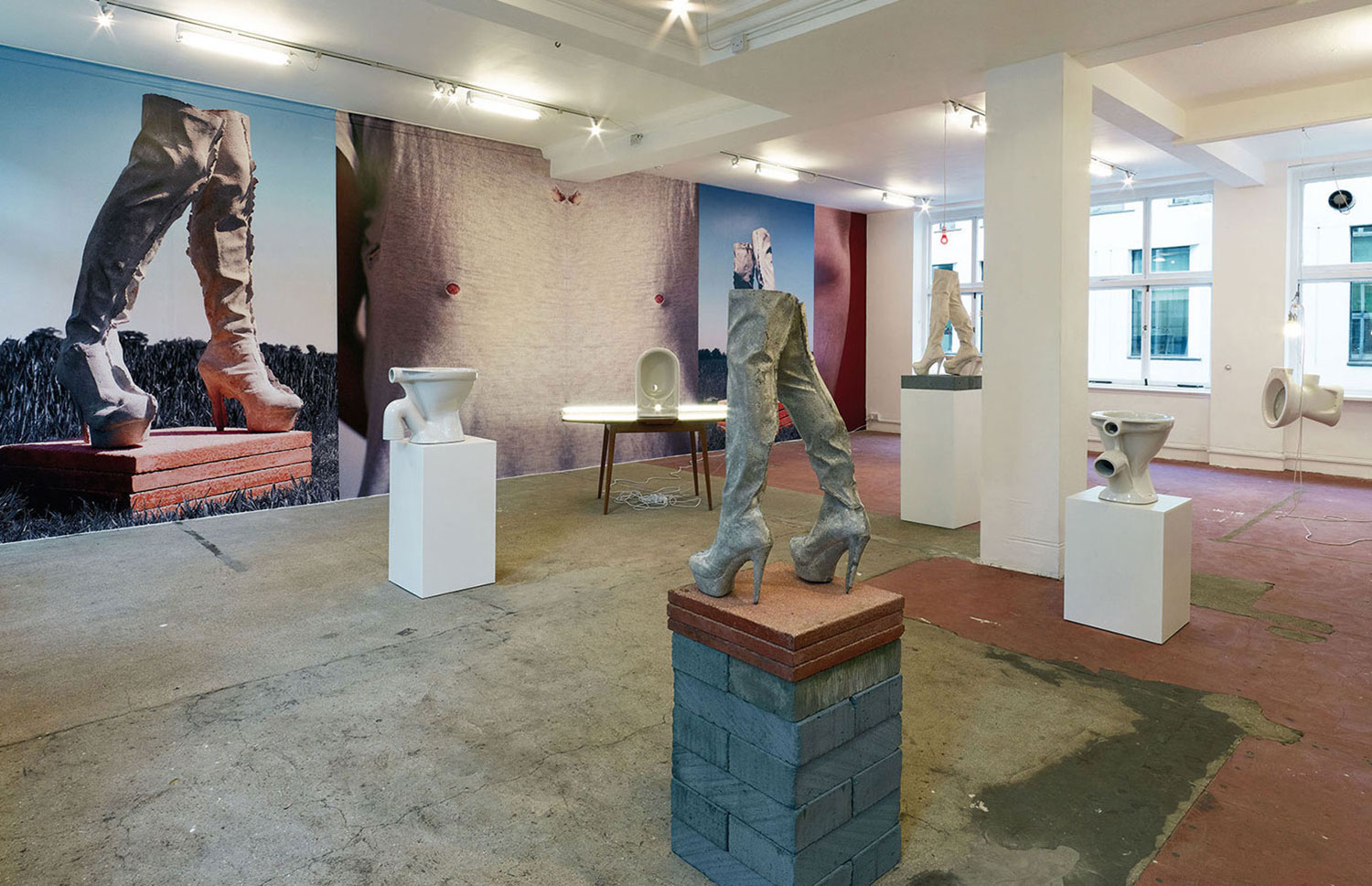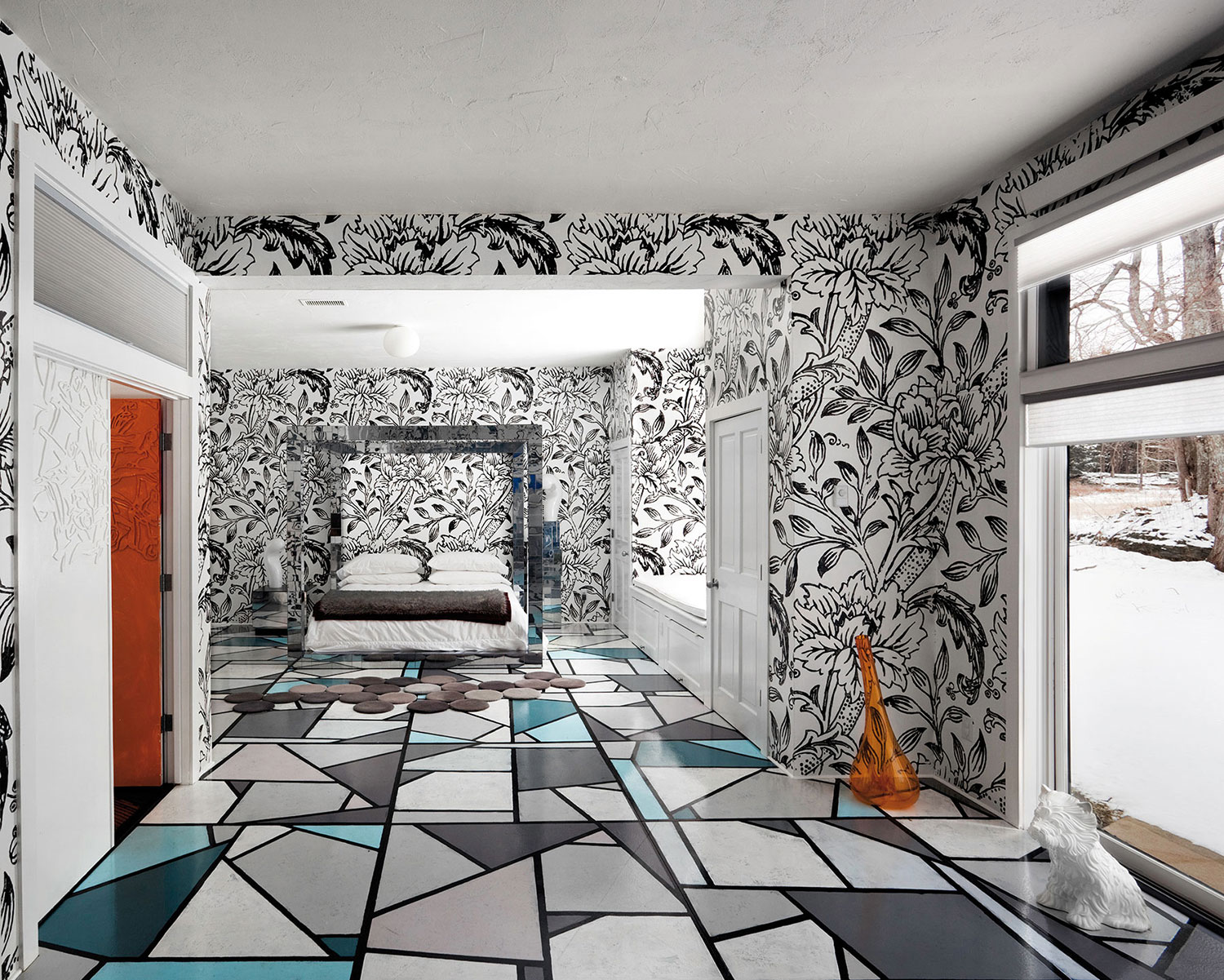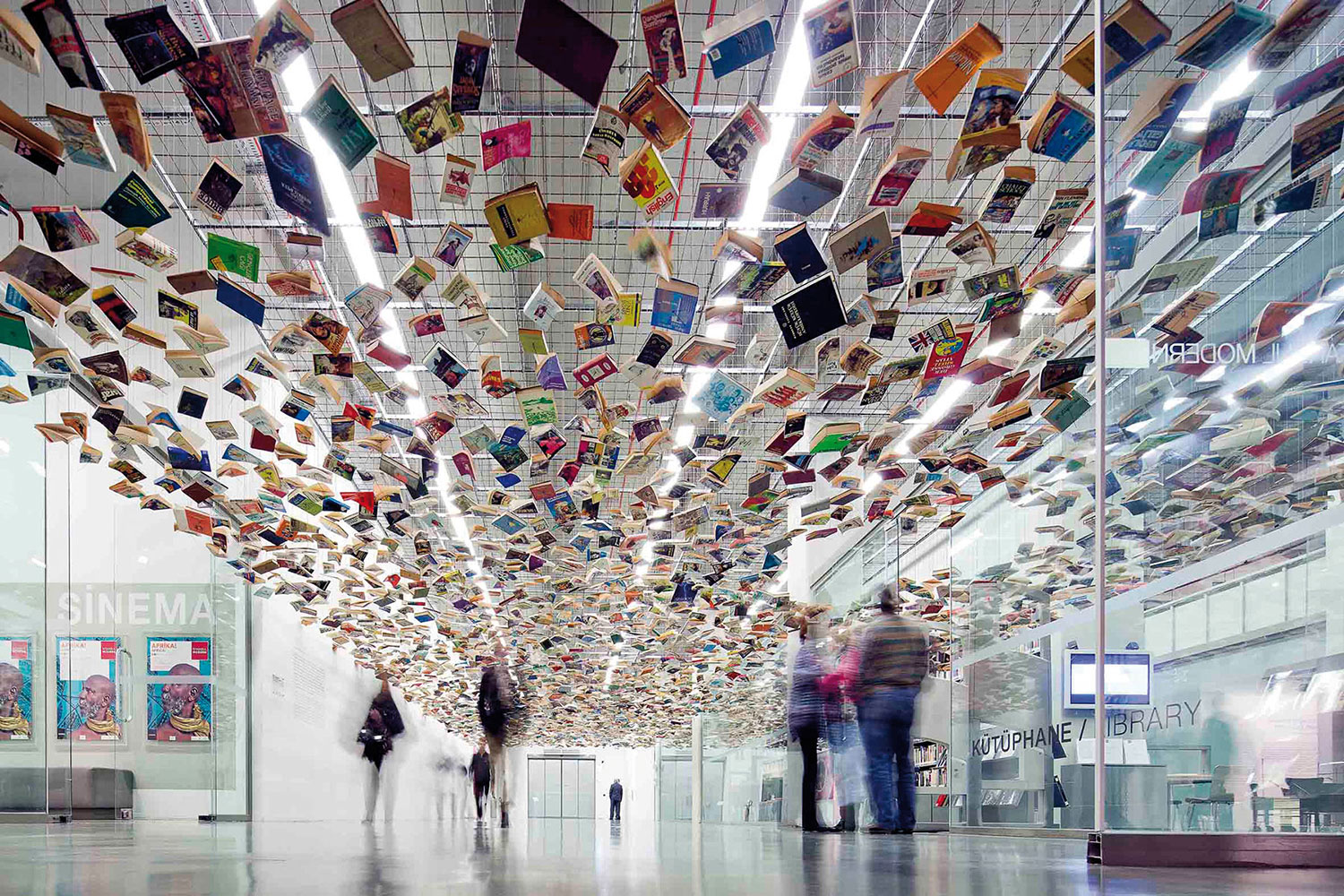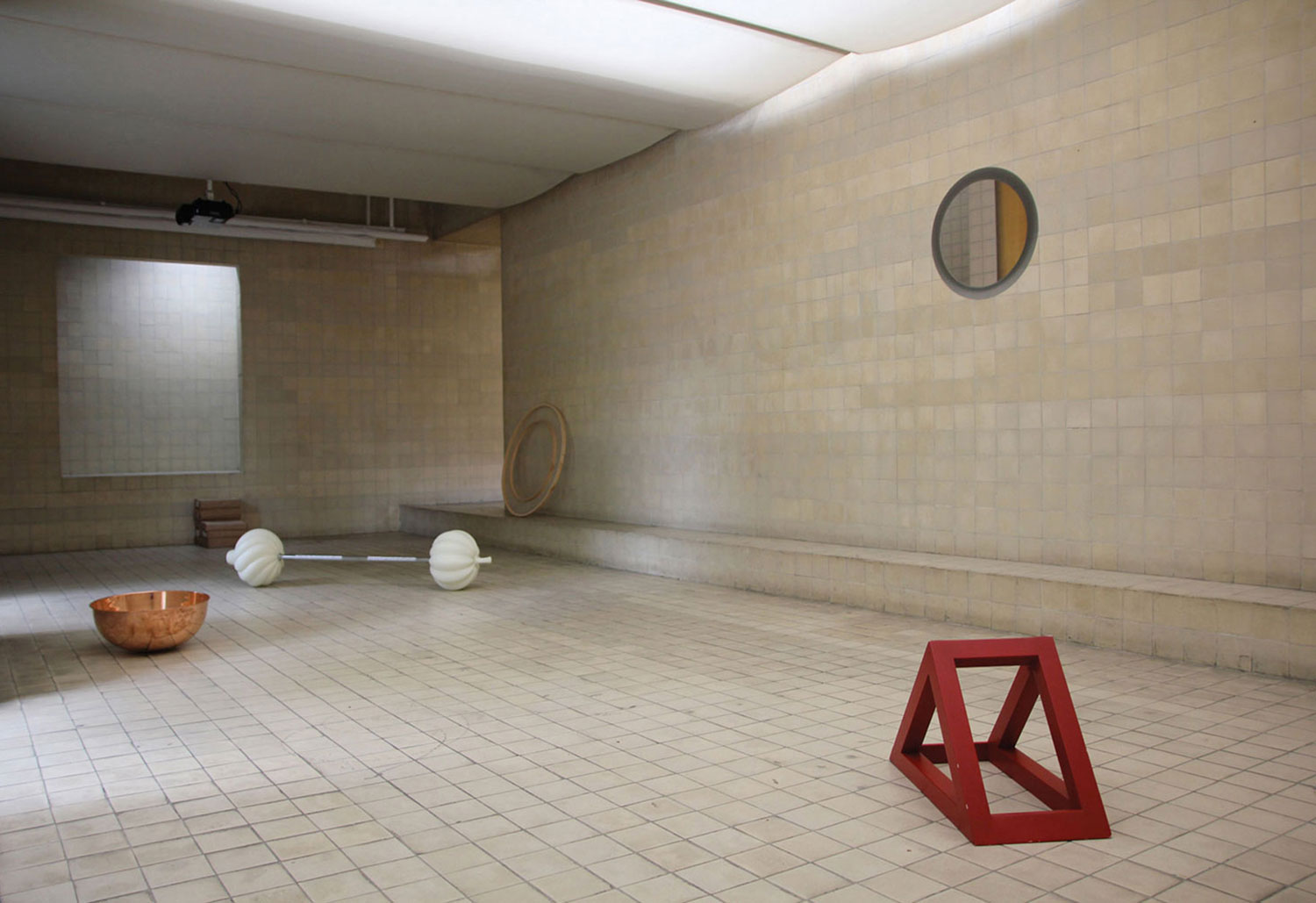
I have come to the conclusion that there is no other possibility to do something for man other than through art. And to do this I need an educational concept. I need a conception of perception theory, and I must negotiate. Thus there are three things that belong under one roof.1
The objects are only understandable in relation to my ideas. The work I do politically has a different effect on people because such a product exists, than it would have if the means of expression were the written word. Although these products may not seem suitable for bringing about political change, I think more emanate from them than if the ideas behind them were revealed directly.2
… as the forms pass into sculpture, then into performance and speech, it becomes clear that the key lies in this duality, the coexistence of polarities: warm-cold, active-passive, defined form, amorphous farm, life and death.3
When I speak about thinking I mean it as form. People have to consider ideas as the artist considers sculpture to seek the forms created by thinking. It’s the difference between soft, organic forms and hard, crystallized forms: the search is for a solution between these poles. By this I mean to find the evolutionary step towards a new kind of freedom.4
At the outset of a work I may well begin from feelings, but ideas crystallize out of it during the process. Here the essential idea was the battery. These felt piles (like the smaller ones I have already made) are aggregates, and the copper sheets are conductors. The accumulation of warmth in the felt works for me like a powerhouse, a static action… All Fonds have in common the character of basis or foundation on which one stands and out of which other more differentiated sculptures can be developed.5
What interests me in felt is not its haptic nature as as often been thought, but insulation.6
Felt as used in all the categories of warmth sculpture … does have a bearing on the character of warmth. Ultimately the concept of warmth goes even further. Not even physical warmth is meant. If I had meant physical warmth, I could just as well have used an infrared light in my performance. Actually I mean a completely different kind of warmth, namely spiritual or evolutionary warmth or the beginning of an evolution.7
…warmth and self-determination as against materialist greed and alienation.8
I do not want to carry art into politics, but make politics into art.9

This appeal wants to encourage and exhort to adopt the way of nonviolent transformation. To those who have been passive till now even though filled with discomfort and dissatisfaction goes our call: BECOME ACTIVE!10
I could not find a starting point in the current the art historian looks at. On the contrary, my starting point in art is more likely through science. Investigating the meaning of life I felt I had a starting point with confrontations with art. To get there via art history is always problematical to me…11
People are not moved enough in their interior life, and therefore they don’t change. Your demand — art instruction should continue throughout one’s life, there should be an evolution — can only be achieved if art instruction invades all disciplines.12
… the art historians have to be decapitated.13
I realized the part the artist can play in indicating the traumas of a time and initiating a healing process. That relates to medicine, or what people call alchemy or shamanism, though that should not be overstressed. Now through art this was brought to a higher level of application. Out of it came the Theory of Sculpture. By that I mean that I saw the relationship between the chaos I had experienced and a sculptural analogy. Chaos can have a healing character, coupled with the idea of open movement which channels the warmth of chaotic energy into order or form.14
If you just describe what you see, you’ll be sure to get there, you’ll arrive in the sphere of the things I mean.15
My intention was not to create or depict symbols, but to express the powers that exist in the world: the real powers. The old way of doing this was through mythology. The new way is more through the understanding of art and science: what I call exact science — the result of direct observation.16
When I do an action like the one I did with the coyote, I wasn’t interested in giving some kind of zoological lecture or anything. I was trying to show people that there is a realm that exists below the human realm and which is a kind of precursor to human evolution, an autonomous animal realm. I took a creature out of this realm and brought it into contact with human beings, and people felt provoked — in the end it provoked them into asking themselves whether there might not be other realms that exist above the human realm.17
Art is not there to be simply understood, or we would have no need of art.18
There are two different concepts in my sculptural theory: sculpture and plastic (Skulptur und Plastik). Sculpture would correspond to the German word Bildhauerei and plastic would correspond to organic images from inside. Or when one compares a piece of stone that I find and here somewhere a natural process has taken place on it… let us suppose one finds a stone, which originates out of the grinding of a glacier, where such a glacier has made a concave furrow in it, that would correspond to the sculptural (bildhaufischen) element. In contrast, when I find a bone, one would say it has really formed out of fluid processes, which are then solidified… Thus everything which later becomes hardened in human physiology originates out of the fluid process and is also very clearly followed back: embryology… and little by little it becomes hard, out of a fluid, common movement process, out of an evolutionary basic principle which means movement… That is why I have also taken fat, because it is lighter, more mobile, in other words tends toward fluidness. Especially now — what especially interests me — is fluid like oil, which hardens and is then more or less firm. This all has a function within this theory; that is why I did not intentionally take fat because it looks so awful, but I took it because I wanted to make something clear about this matter, how it reacts within this theory… And not only to artistic forms, but also to social forms or legal forms or economic forms, or also agricultural problems or also to other formal and educational problems. All questions of man can be only a question of form, and that is the totalized concept of art…19
But my speeches are my sculptures.20
The theory is based on the passage from chaotic material to ordered form through sculptural movement: chaos order / undetermined determined / organic movement crystalline / warm cold / expansion contraction.21
My objects are to be seen as stimulants for the transformation of the idea of sculpture, or of art in general. They should provoke thoughts about what sculpture can be and how the concept of sculpting can be extended to the invisible materials used by everyone.22
I use the idea of the transformer so often in my drawings. It contains a transforming stimulus — the transformation of concepts, the transformation of real events, transformations of social institutions, transformation of nature, transformation of technology, transformation of the human circulatory system. Everything in the present has to be transformed, otherwise there would be no future, and different models of transformation have to be discussed…23
That is why the nature of my sculpture is not fixed and finished. Processes continue in most of them: chemical reactions, fermentations, color changes, decay, drying up. Everything is in a state of change.24

The outward appearance of every object I make is the equivalent of some aspect of inner human life… My feelings then had this special kind of darkness — almost black like this mixture of rubber and tar. It is certainly an equivalent of the pathological state mentioned before, and expresses the need to create a space in the mind from which all disturbances were removed: an empty insulated space. Within this empty space investigations can take place, and from this concentration new experiences can emerge. This is a prerequisite for every experiment with the Theory of Sculpture: the principle of the insulator.25
I am no longer interested in the art world, in this little pseudo-cultural ghetto. That’s why I have no declarations to make about the creativity of artists and the modern art world but would like to make declarations about the creativity of human work in general.26
For me the concept of aesthetics in the old sense is no longer relevant. The human being is itself aesthetics, aesthetics today being a side effect of every human activity… If aesthetics equals human being, then human being equals artist: whether he develops into a useful specialist in this field of importance to art history is a secondary consideration. It is almost the other way around: the human being arrives here perhaps already an artist and leaves with the intention of studying engineering… The most radical and probably only sensible thing would be to bring the artistic into consciousness and to make it clear that man cannot live without it. The artistic would permeate all disciplines.27
Our culture is not moulded by culture but by economic powers. There would be nothing wrong with that if one had the right concept of economics clearly in focus. We must get another notion of economics.28
I have always tried to show why art has to do with life. Only from art can a new concept of economics be formed, in terms of human need, not in the sense of waste and consumption, politics and property, but above all in terms of the production of spiritual goods…29
The Bauhaus… did not, after all, produce anything that people today can perceive in a positive way. What’s standing around in the cities in cubic or serial form is today less an expression of cultural life than an expression of economic power. When you look at the tall buildings in Frankfurt, for instance, their dimensions and their cubic structure make them powerful, which means that there is a scheme. But it has no longer anything to do with any kind of cultural intention. All that has become an expression of economic power…30
… people in our time, which they feel is one of crisis, want to return to something spiritually unified, while experiencing their own culture as alienated, torn, decadent, and ruined…31
The analytical method which has since come to the fore no longer admits the spiritual, until at the height of materialism there is nothing left of it. Then, only the measurable, the weighable, the countable counts, that is to say the material. At the height of materialism there is, at the same time, modern technology. And modern natural science has taken the place of philosophy. Because what came after Hegel cannot, in the true sense of the word, be called philosophy; rather they are systems of thought, in the case of Marx using national economy as a particular science within the system…32
… not only painters, sculptors, piano players, dancers, and singers are artists, but everyone is an artist! [Duchamp] should have put it just as radically as I have put it and should have said: thus the development of art from the Stone Age to the present has arrived at an end. And what is changing now should not only be innovations in the museums and in the art market, but the concept of art should be transformed immediately. That’s what he should have said. He should have said: the concept of art must transform itself to include everything that is created, even today’s economic and production output. And the first plausible thesis to come out of this process would have been: every human being is an artist. The concept of art should have become anthropological…33
Before we ask WHAT CAN WE DO? we have to first consider the question HOW MUST WE THINK.34

